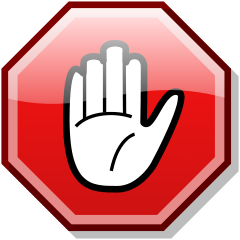SRD:Race Descriptions
| This material is published under the OGL 1.0a. |
Race Descriptions
Character Size
| Size Category |
Attack and AC Modifier |
Special Attacks Modifier1 |
Hide Modifier |
Height or Length2 |
Weight3 | Space4 | Natural Reach4 | Carrying Capacity Mulitplier | ||
|---|---|---|---|---|---|---|---|---|---|---|
| Tall | Long | Biped | Quadruped | |||||||
| Fine | +8 | −16 | +16 | 6 in. or less | 1/8 lb. or less | 1/2 ft. | 0 ft. | 0 ft. | ×1/8 | ×1/4 |
| Diminutive | +4 | −12 | +12 | 6 in.–1 ft. | 1/8 lb.–1 lb. | 1 ft. | 0 ft. | 0 ft. | ×1/4 | ×1/2 |
| Tiny | +2 | −8 | +8 | 1 ft.–2 ft. | 1 lb.–8 lb. | 2-1/2 ft. | 0 ft. | 0 ft. | ×1/2 | ×3/4 |
| Small | +1 | −4 | +4 | 2 ft.–4 ft. | 8 lb.–60 lb. | 5 ft. | 5 ft. | 5 ft. | ×3/4 | ×1 |
| Medium | +0 | +0 | +0 | 4 ft.–8 ft. | 60 lb.–500 lb. | 5 ft. | 5 ft. | 5 ft. | ×1 | ×1-1/2 |
| Large | −1 | +4 | −4 | 8 ft.–16 ft. | 500 lb.–2 tons | 10 ft. | 10 ft. | 5 ft. | ×2 | ×3 |
| Huge | −2 | +8 | −8 | 16 ft.–32 ft. | 2 tons–16 tons | 15 ft. | 15 ft. | 10 ft. | ×4 | ×6 |
| Gargantuan | −4 | +12 | −12 | 32 ft.–64 ft. | 16 tons–125 tons | 20 ft. | 20 ft. | 15 ft. | ×8 | ×12 |
| Colossal and Colossal+ | −8 | +16 | −16 | 64 ft. or more | 125 tons or more | 30 ft. | 30 ft. | 20 ft. | ×16 | ×24 |
| ||||||||||
A Small character generally moves about two-thirds as fast as a Medium character.
A character must use weapons for creatures of his size.
Race and Languages
All characters know how to speak Common. A dwarf, elf, gnome, half-elf, half-orc, or halfling also speaks a racial language, as appropriate. A character who has an Intelligence bonus at 1st level speaks other languages as well, one extra language per point of Intelligence bonus as a starting character.
Literacy
Any character except a barbarian can read and write all the languages he or she speaks.
Class-Related Languages
Clerics, druids, and wizards can choose certain languages as bonus languages even if they’re not on the lists found in the race descriptions. These class-related languages are as follows:
Cleric
Abyssal, Celestial, Infernal.
Druid
Sylvan.
Wizard
Draconic.
Favored Class
A character’s favored class doesn’t count against him or her when determining experience point penalties for multiclassing.
Level Adjustment
Add this number to the creature’s total Hit Dice, including class levels, to get the creature’s effective character level (ECL). A character’s ECL affects the experience the character earns, the amount of experience the character must have before gaining a new level, and the character’s starting equipment.
Vital Statistics
Age
Starting Age
You can choose or randomly generate your character’s age. If you choose it, it must be at least the minimum age for the character’s race and class. Your character’s minimum starting age is the adulthood age of his or her race plus the number of dice indicated in the race's random starting ages table corresponding to the character’s class.
Alternatively, refer to the race's random starting ages table and roll dice to determine how old your character is.
Simple
Barbarian, rogue, sorcerer, soulknife, wilder.
Moderate
Bard, fighter, paladin, psychic warrior, ranger.
Complex
Cleric, druid, monk, psion, wizard.
Aging Effects
With age, a character’s physical ability scores decrease and his or her mental ability scores increase (see each race's aging effects table). The effects of each aging step are cumulative. However, none of a character’s ability scores can be reduced below 1 in this way.
When a character reaches venerable age, secretly roll his or her maximum age, which is the number from the Venerable column on the race's aging effects table plus the result of the dice roll indicated on the Maximum Age column on that table, and records the result, which the player does not know. A character who reaches his or her maximum age dies of old age at some time during the following year.
The maximum ages are for player characters. Most people in the world at large die from pestilence, accidents, infections, or violence before getting to venerable age.
Height and Weight
The dice roll given in the Height Modifier column determines the character’s extra height beyond the base height. That same number multiplied by the dice roll or quantity given in the Weight Modifier column determines the character’s extra weight beyond the base weight.
Back to Main Page → 3.5e Open Game Content → System Reference Document → Races
